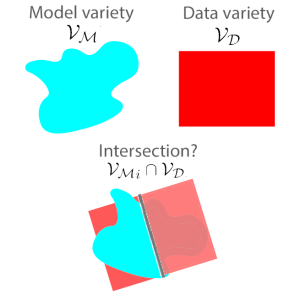Across the physical and biological sciences, mathematical models are formulated to capture experimental observations. Often, multiple models are developed to explore alternate hypotheses. It then becomes necessary to choose between different models.
Oxford Mathematician Heather Harrington and colleagues from the United States have explored the problem of model selection by regarding mathematical models as geometric objects in space. In general, model selection is a hard problem, but recasting it in geometric terms allows the authors to give a new methodology for selecting the best explanation of observed phenomena, thereby bringing recent groundbreaking developments in nonlinear algebra to the study of biological and other complex systems.
Specifically their paper, published today in the Royal Society Journal Interface, considers polynomial models (e.g., mass-action chemical reaction networks at steady state) and describe a framework for their analysis based on optimisation using numerical algebraic geometry. The authors use probability-one polynomial homotopy continuation methods to compute all critical points of the objective function, then filter to recover the global optima. This approach exploits the geometric structures relating models and data, and demonstrates its utility on examples from cell signalling, synthetic biology, and epidemiology.


